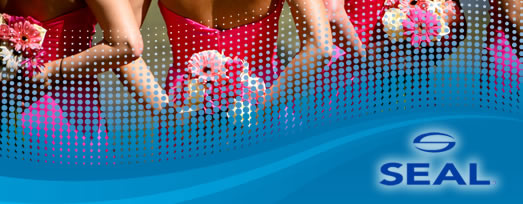November 30, 2009
Seal Laminators
If you are working with a good ink-jet or plotter printer, and you produce high quality images with vibrant colors and definition, you might have already noticed that your prints are not the finished product. Your clients, surely satisfied with your work, return for more prints; but have to travel to another business to get the post-production work done – mounting and lamination. Only once these processes have been worked will the final product be available to the public’s eyes.
Why haven’t you started to offer these services in your own business? You’ve probably heard the phrase, "The frame is worth more than the photo." This sums up the post-production process. Why send your clients elsewhere, when you could provide these services and increase clientele and profits.
Seal 44 Ultra PlusWith the versatility of these Seal Laminators, their ease of use and adaptability to material sensitivity, you’ll see how easy it is to increase revenue from clients you already have, and provide extra services in a steady, supportive field.
What services could you offer with a laminator, you ask?
Basically, there are three:
Face Lamination: The process of applying a sealing, permanent film over the print. Utilizing several different options to bring out true colors and desired finish (matte, glossy, etc.) Lamination is also used to protect the prints, and extend their durability.
Mounting: The process of fixing a print onto a rigid material using an adhesive film. The laminator activates the adhesive with either pressure or heat, and fixes the image on without faults or air bubbles. There are various techniques of mounting, be it wood, metal, cardboard, or even a transparent laminate known as Face Mounting. Some of these types of mounting can cost multiple times the amount of the print itself, and the laminating machine is essential for this application.
Seal 62 BaseEncapsulation: By applying the laminating film over a print, using a heat-conducting laminator, you can seal the complete image leaving a small border around the print. By using this process, you can manipulate the print much easier, without worrying about losing image quality or damaging the print. This use is ideal for use in education, restaurants and hospitality, conferences and meetings, and many others where the same print can be reused many times.
These are some points to consider when choosing a laminator:
Maximum Width of the Laminator: The laminators always come a little wider than the normal printing sizes. Typically, they are in the ranges of 24", 43", 61" and 80". The Seal laminators, for example, come in 44" and 62".
Seal 62 Ultra PlusWhat you want to produce: Posters, presentation panels, frames, light boxes, etc. Each application utilizes a specific material, each for the item’s sensitivities of heat or pressure. By choosing the Seal 62 Ultra C Plus, your prints will be laminating using a Cold process that may be suitable for more jobs. The Seal 62 Base also comes with Heat Assist for high volume production.
For use with materials sensitive to heat, we also have the Seal 44 Ultra Plus (44") and the Seal 62 Ultra plus (61").
The acquisition of a lamination machine will convert your business from a basic printing processor to having the capabilities to offer a finished product, not losing out on possible revenue from the same client; and bringing in new clients that wish to have this post-production work, and in turn choose your business for their printing needs as well.
For more information on the Seal Laminators or the lamination process, feel free to contact me at anytime.
This is has been Carlos from Image Pro, and it’s been a pleasure.
Subscribe to:
Post Comments (Atom)






This comment has been removed by a blog administrator.
ReplyDeleteWe purchased a larger 60+ Seal upon retiring a 44 Ultra after running it almost nonstop for 15 years. It has been an excellent machine! It actually still works fine!
ReplyDelete